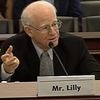Airlines for America CEO Nick Calio's recent lawsuit against the Federal Aviation Administration demonstrates that lobbyists today aren't as invested in the details as they used to be
Last summer I thought several times of my old friend Bob Williams, who is now retired but who for many years was the head of government affairs for United Airlines. Bob was a strong Republican, and I was just as strong a Democrat. We argued about a lot of things over the years, but one thing I came to appreciate was the fact that there was never a bill introduced in Congress, much less brought up for a hearing or reported by a committee, that Bob did not know inside out if it affected the airline industry.
I thought of Bob's efforts for United as I worked to explain the probable impact that the sequester legislation might have on the nation's air traffic control system and on air transportation in general. I argued that there were two options, given how the law was written: Shut down about 100 smaller airports or permit a significant degradation in air-traffic control services between major hub airports. Remarkably, although so much seemed to be at stake, the airlines and their Washington representatives seemed to be missing in action. Bob would have likely been all over this problem before I even realized it was an issue, but there was not a peep from any of the well-heeled current representatives of the airline industry.
Recently the story grew even more bizarre. Nick Calio, president and chief executive officer of Airlines for America, an association that represents the major airline carriers, filed suit against the Federal Aviation Administration for making the furloughs that I had predicted almost a year ago. He gave several press interviews claiming that, "The FAA has a budget of $15.6 billion dollars. A budget that big, surely they can find the money to not furlough the air traffic controllers and have this kind of rolling impact on the [U.S.] economy -- it's gonna cost a lot more." Hello?
OK, so not every lobbyist is going to be the stickler for detail in the way that Bob Williams was. But we aren't talking about legislation pending before a committee. We aren't talking about legislation being debated on the floor. We are talking about a law that has been on the books for a year and a half. Surely someone at Airlines for America had the time to read the law since then.
Chapter 20 of Title II of the U.S. Code, otherwise known as "EMERGENCY POWERS TO ELIMINATE BUDGET DEFICITS," provides in excruciating detail, written into 17 separate sections of the chapter, instructions to the president of the United States on how to prepare a sequestration order. Not only does Congress forbid agencies from picking and choosing which programs in the agency will be targeted for cuts, but it also forbids them from singling out projects and activities within any of the programs they manage for disproportionate reductions. As a result, the FAA cannot choose the obvious candidate for absorbing the 2013 sequester reduction -- grants for airport construction, a program that will have virtually no near-term impact on the country or the traveling public. It cannot even choose among the various projects or activities within Air Traffic Operations to identify programs or activities that could be cut more than others. Everything must be cut the same.
If one were to quibble with the FAA's implementation of sequestration, it could be argued that the agency has assumed more latitude in implementing the cuts than the law allows. In particular, they have attempted to make major reductions in the contract-tower program, a grant program that subsidizes the hiring of controllers for mostly smaller local airports. If the courts see this as a "program" within the sequestration definition of program, project, and activity, however, these reductions would not be permitted by the law. There is little doubt that the agency is trying to protect the public from increased danger and inconvenience by eliminating air-traffic-control services to these small airports with few flights and passengers in order to avoid even larger cuts at larger more heavily used airports, but it appears to me that they are vulnerable in court if the disproportionate cuts they are exacting against the contract-tower program are challenged.
Now Calio is suing the FAA, saying they shouldn't do what Congress has ordered. His lawyers make the remarkably lame argument that the FAA is not bound to follow the across-the-board requirements for programs, projects, and activities because the funding was provided in a continuing resolution rather than a regular appropriation bill. That argument is not likely to take the association very far, however, if the judge bothers to read the pertinent sections of the continuing resolution. Section 1102 of Division F states, "Appropriations made by (this act) shall be available to the extent and in the manner that would be provided by the pertinent appropriations Act." Section 1105 of that same division states, "Except as otherwise expressly provided in this division, the requirements, authorities, conditions, limitations and other provisions of the appropriations Acts ... shall continue in effect."
Perhaps it would have been better to spend some money to have lawyers read the legislation while there was still time to repeal it, rather than paying for a meritless lawsuit to provide cover for the industry's inept performance in protecting its own interests.
Scott Lilly is a Senior Fellow at the Center for American Progress.
